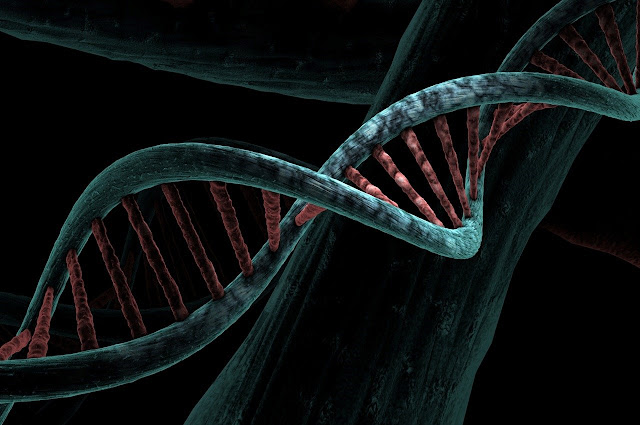Agriculture has always been the backbone of human civilization, and as we move into the future, the need for innovative solutions to improve crop yields and resilience becomes increasingly crucial. One such groundbreaking innovation is minichromosome technology. This advanced genetic engineering technique holds the potential to revolutionize the way we cultivate crops, making agriculture more efficient and sustainable.
What is Minichromosome Technology?
Minichromosome technology involves the creation of small, artificial chromosomes that can be introduced into plants. These minichromosomes are separate from the plant’s natural chromosomes and can carry multiple genes. Unlike traditional genetic modification, which typically involves inserting a single gene into the plant’s genome, minichromosome technology allows for the insertion of several genes at once. This capability enables the development of crops with multiple desirable traits without disrupting the plant’s native genetic structure.
How Does Minichromosome Technology Work?
Minichromosomes are constructed using advanced biotechnological methods. Scientists can design these chromosomes to include a variety of genes that confer beneficial traits such as disease resistance, drought tolerance, and enhanced nutritional content. Once the minichromosome is constructed, it is introduced into the plant cells through a process called transformation. The plant cells then incorporate the minichromosome, which functions alongside the plant’s natural chromosomes, allowing the plant to express the new traits.
Applications of Minichromosome Technology in Agriculture
1. Disease Resistance: One of the most significant applications of minichromosome technology is in developing disease-resistant crops. By incorporating genes that provide resistance to various pathogens, plants can become less susceptible to diseases. This not only improves crop yields but also reduces the need for chemical pesticides, which can have negative environmental impacts.
2. Drought Tolerance: With climate change posing a threat to global water resources, developing drought-tolerant crops is essential. Minichromosome technology can introduce genes that enhance a plant’s ability to withstand prolonged periods of drought. These crops can maintain productivity even in adverse conditions, ensuring food security in regions prone to water scarcity.
3. Enhanced Nutritional Content: Malnutrition remains a significant issue in many parts of the world. Minichromosome technology can help address this problem by developing crops with enhanced nutritional content. For example, scientists can introduce genes that increase the levels of essential vitamins and minerals in staple crops like rice and maize, providing a more balanced diet to populations that rely heavily on these foods.
4. Increased Yield: By incorporating genes that promote faster growth and higher yield, minichromosome technology can help farmers produce more food on the same amount of land. This is particularly important as the global population continues to grow and the demand for food increases. Higher yields can also improve the economic viability of farming, benefiting farmers financially.
Benefits of Minichromosome Technology
1. Precision and Efficiency: Minichromosome technology offers a high degree of precision in genetic modification. Since the minichromosomes are separate from the plant’s natural chromosomes, there is less risk of unintended genetic changes. This precision ensures that the desired traits are expressed without affecting the plant’s overall health and development.
2. Multi-Trait Stacking: One of the most significant advantages of minichromosome technology is its ability to stack multiple traits into a single plant. Traditional genetic modification techniques often require multiple rounds of modification to introduce several traits, which can be time-consuming and less efficient. Minichromosome technology allows for the simultaneous introduction of multiple beneficial genes, accelerating the development of improved crop varieties.
3. Environmental Sustainability: By reducing the need for chemical pesticides and fertilizers, minichromosome technology can contribute to more sustainable farming practices. Disease-resistant and drought-tolerant crops can thrive with fewer inputs, reducing the environmental footprint of agriculture. This sustainability is crucial for protecting natural resources and ensuring the long-term viability of farming.
Challenges and Future Prospects
Despite its promising potential, minichromosome technology faces several challenges. The complexity of constructing and introducing minichromosomes into plants requires advanced scientific expertise and significant investment. Additionally, regulatory hurdles and public perception of genetically modified organisms (GMOs) can impact the adoption of this technology.
However, the future prospects of minichromosome technology are bright. As research and development continue, the costs and technical barriers are expected to decrease, making the technology more accessible to farmers worldwide. Continued education and communication efforts can also help address public concerns and promote the benefits of this innovative approach.
Conclusion: Minichromosome technology represents a significant leap forward in the field of agricultural biotechnology. By enabling the precise and efficient introduction of multiple beneficial traits into crops, this technology has the potential to address some of the most pressing challenges facing agriculture today. From disease resistance to enhanced nutritional content, the applications of minichromosome technology are vast and varied.
As we look to the future, embracing such advanced technologies will be crucial for ensuring food security and environmental sustainability. Minichromosome technology offers a promising path forward, paving the way for a new era of agricultural innovation that can meet the needs of a growing global population while protecting our planet.




0 Comments